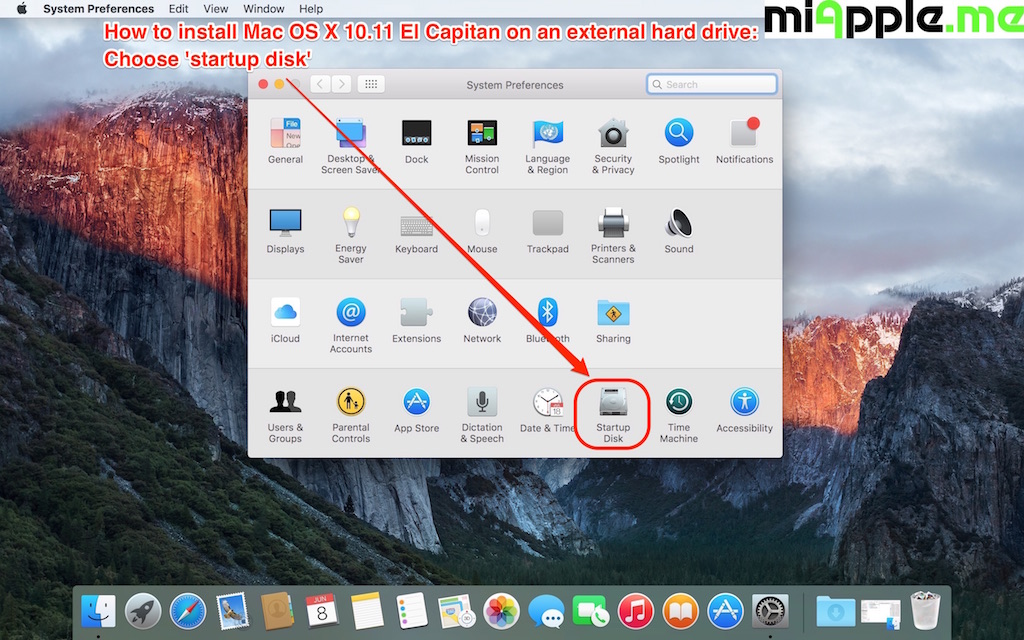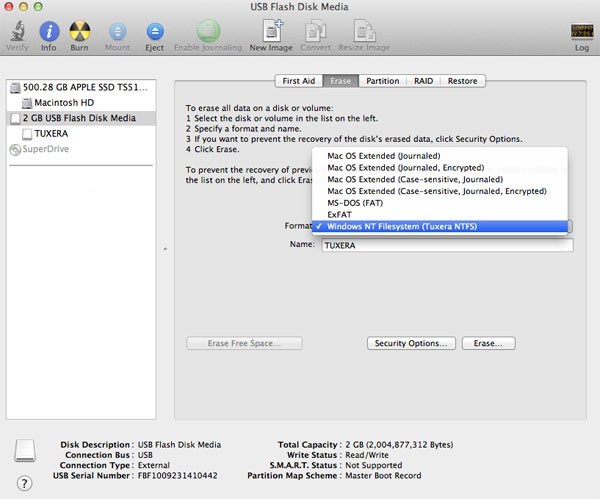

- #MAC OSX 10.11 CHANGED DISK AID MANUAL#
- #MAC OSX 10.11 CHANGED DISK AID FREE#
- #MAC OSX 10.11 CHANGED DISK AID MAC#
I suspect that the First Aid function in El Capitan’s Disk Utility and OnyX are running only the old Verify/Repair Disk function, which rarely comes up with errors.ĭisk Utility cannot be running Verify/Repair Disk Permissions because running the Terminal command displayed many permissions errors and then went on to repair them. Remember the old Disk Utility had Verify/Repair Disk and Verify/Repair Disk Permissions? There were hardly ever any disk problems, but often there were lots of permissions problems. So why does Disk Utility in El Capitan say everything is OK? These can cause a variety of problems and they can slow down the Mac, cause error messages and problems in apps, and more. But here is what repair_packages found:ĭozens of permissions errors. OnyX also said that there were no problems. To recap, the First Aid function in El Capitan’s Disk Utility said there were no disk problems. Sudo /usr/libexec/repair_packages -repair -standard-pkgs / If errors are found, they are fixed, if none is found then it does nothing. To repair disk faults from the Terminal command line replace -verify with -repair like this: As with the old Disk Utility, you should ignore this and go straight to the repair option. This command is a bit pointless because it just shows the errors and it does not fix them.

A single slash ( /) means start at the root of the current disk. The -verify tells the command to check the disk and the / at the end is the volume to check. The sudo at the start is to run the /usr/libexec/repair_packages command as an administrator. Sudo /usr/libexec/repair_packages -verify -standard-pkgs / The command to enter into the Terminal window for checking the disk's health is:
#MAC OSX 10.11 CHANGED DISK AID MANUAL#
You can read about repair_packages in the OS X manual on the Apple website. You can also check for disk problems using the Terminal and there is a command line tool that will do the job. You should allow it to do this before you use any of the tools., many of which delete or change files on the disk.Īfter scanning the disk, OnyX reported a clean bill of health. When it starts up, it asks if you want to check the disk drive for problems.
#MAC OSX 10.11 CHANGED DISK AID FREE#
OnyX is a free tool for tweaking OS X, clearing out junk and unnecessary files like logs and caches, and general house-cleaning tasks. The disk is even given a green tick to show that it is OK. Here is a typical result from running First Aid. It says that the disk is fine and the operation was successful. Click the Show Details link to expand the panel and read the results. Click it and it will check the disk drive for problems and fix them (you'd think, more of that later). Instead of the four Verify / Repair buttons that we had previously, now there is a single First Aid button. It is simpler and has slightly fewer features. The El Capitan version of this app is more colourful, but it has been dumbed down a bit.
#MAC OSX 10.11 CHANGED DISK AID MAC#
Most Mac users have upgraded to OS X El Capitan and have discovered that there is a new Disk Utility. 1 Use First Aid in Disk Utility in El Capitan Similarly, you can check the disk permissions with the Verify Disk permissions button on the left and then use the Repair button to fix problems if they are found. Select the First Aid tab and down near the bottom of the window were four buttons Verify Disk / Repair Disk on the right, and Verify Disk Permissions / Repair Disk Permissions on the left.Ĭlick Verify Disk and if a problem was found, the Repair Disk button was activated and could then be clicked to fix whatever ails the disk. The way to fix disk problems in previous versions of OS X like Yosemite, Mavericks, and Mountain Lion was to run Disk Utility, which is in the Applications/Utilities folder. Related: Get to know the new Disk Utility in El Capitan Old Disk Utility How often should you check and fix the disk? Once a month is a good schedule, but you should do so any time you suspect that their might be something wrong with the Mac. You must check for disk problems on a regular basis and fix them. Disk errors become app errors or system errors and lead to instability. However, they will not go away on their own and as the number of disk errors increases they can reach a point where they do start to affect the way the Mac behaves. Problems arise on the disk drive from time to time and they are usually minor and don’t affect you.

Fix them before they become serious and begin to affect performance and reliability. Don’t let small disk problems grow into big ones on the Apple Mac.


 0 kommentar(er)
0 kommentar(er)
